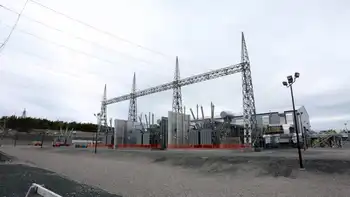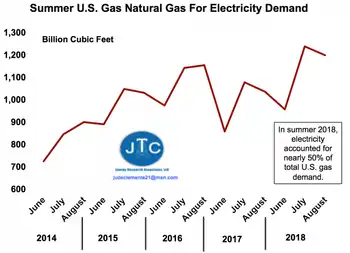Will burning garbage make us sick?
By Toronto Star
Arc Flash Training - CSA Z462 Electrical Safety
Our customized live online or in‑person group training can be delivered to your staff at your location.

- Live Online
- 6 hours Instructor-led
- Group Training Available
“It’s a travesty that they’ve chosen greed over the health and welfare of our children,” Oshawa mother Marissa Kata said of the region’s decision to ask Covanta Energy to build a $236 million plant near Clarington that would erase the region’s garbage problem while generating power.
“We have a moral responsibility to stand up and say ‘no’,” chimed in Sid Ryan, president of the Canadian Union of Public Employees Ontario, also on hand that night. Antiincinerator Councillor Brian Nicholson claimed the region’s consultant had admitted there was a health hazard involved, “But they buried it deep in the 400page report.”
And some 75 doctors are said to have come out against the plan, worried about what else the plant might generate: asthma, cancer, delayed development in children?
On the other hand, proponents say improved technology and tightened emissions standards mean todayÂ’s incinerators are safe. Even Greenpeace, once a fierce foe of incineration, has abandoned its campaign against it. And the Clarington project recently passed muster with the Ontario environment ministry.
So whoÂ’s right?
The health debate around incineration is hardly new. The fury that erupted around incinerators in the 1980s and 1990s led to closing many plants, including Toronto’s Commissioners St. facility. Years after the plants were built, it was learned that burning certain garbage at certain temperatures emits dioxins and furans — highly toxic chemicals that the body never flushes — as well as dangerous heavy metals such as mercury, lead and cadmium.
Liver cancer, lung cancer, nonHodgkinÂ’s lymphoma, congenital defects in newborns: These were just some of the health effects on nearby populations cited in a 2001 Greenpeace report.
DetroitÂ’s incinerator is a poster child for antiincineration forces. People living in rundown neighbourhoods around the cityÂ’s massive wastetoenergy plant point to its smokestack as the source of their breathing problems. Three times as many kids are sent to hospital with asthma attacks from the area than the state average, according to the Michigan Department of Community Health.
To be fair, thatÂ’s in Motor City, in a 20yearold plant that borders two major highways, with the gaping carcasses of car factories slumping on all sides. The incinerator has had plenty of company in the pollution department.
“People say automobiles going by have a larger effect,” says Sandra TurnerHardy, a softspoken Detroit activist. “But the city doesn’t have the choice to take 100,000 vehicles off the road. They can choose to shut down this facility.”
TurnerHardy began battling to shut the plant down after her granddaughter developed asthma while attending a nearby school. “She went to the hospital three times for asthma attacks,” says TurnerHandy. “Since she left, she has not used her puffer one time.”
But whether DetroitÂ’s experience has any bearing on future choices in the GTA is a big question.
Since the 1980s, governments worldwide have tightened emission standards on the facilities. Tour one today, and youÂ’ll find that half the building is filled with pollutionprevention devices, such as catalytic reactors to neutralize smogforming nitrogen oxides and bag filters to capture particulates that provoke asthma.
“I was very concerned about the health implications when we started this process,” says Durham Region chair Roger Anderson, a key supporter. “We spoke to health officers in Europe and the U.S. We were so concerned, we wouldn’t make a decision until our medical officer of health passed a judgment.”
His research over four years included visits to 13 energyfromwaste facilities in places like Sweden and Holland.
“If our medical officer of health came back and said, ‘It’s not a good process that is going to cause risk to residents,’ I guarantee four years of work would have died on the table,” Anderson says.
Instead, Durham health officer Dr. Robert Kyle gave the project a green light. His risk assessment didnÂ’t say it was 100 per cent safe he said the risks of additional cancers attributable to the plant would be one in a million.
“It’s a conservative, acceptable risk,” Kyle told the Star. “Any industrial enterprise… has risks associated with it.”
Recently, the British Health Protection Agency, an armÂ’slength advisory body made up of professionals and doctors, agreed with him.
“Wellmanaged, modern incinerators are likely to have only a very small effect on health,” the report concludes. Particulates, dioxins, furans, heavy metals — all these things are emitted by incinerators, it states, but at insignificant amounts. Municipal waste incinerators account for less than 1 per cent of UK dioxin emissions.
The changes were what led Greenpeace to dismantle its antiincinerator campaign.
“A lot of the healthimpact concerns about incineration have died away,” says Paul Johnson, principal scientist at the organization’s research lab and an author of that damning 2001 report. “The conventional wisdom is with all the emissions control, they are as safe as houses.”
There are dissenting views, though. Contradicting the health protection agency, the British Society for Ecological Medicine wants a ban on new incinerators and an independent monitoring group struck to oversee existing plants.
Closer to home, Halton Region voted against building an incinerator two years ago, after Bob Nosal, its medical officer of health, raised concerns.
The Durham facility is expected to operate for 25 years. To appease critics, the region has promised bestofthebest testing and monitoring. The operator is expected to meet European emissions limits, more stringent than OntarioÂ’s.
For the first three years, there will be independent studies of ambient air and nearby soil, seeking signs of chemicals and heavy metals. An independent environmental oversight committee will oversee operations.
Anderson envisions an electronic billboard flashing the latest test results to drivers passing by on Highway 401. “I’m convinced once the stack is up people will see it for the first six months,” he says, “then it will become part of the background.”
But across the border in upstate New York, Onondaga County illustrates the problem with relying on political promises. The county pledged much the same rigour when it built its incinerator — run by New Jerseybased Covanta, the company building Durham’s — near Syracuse 15 years ago. The environmental oversight committee was later disbanded. Last year, under financial pressure, the county scrapped its airmonitoring tests and now proposes to cut the soilsampling program by half.
That comes two years after tests revealed raised levels of arsenic and dioxin in nearby soil though still within acceptable limits. And studies of fish in a lake 2.5 km away reveal alarmingly high mercury.
“All these things they talked about, they got watered down,” says Vicki Baker, a town councillor who launched her political career campaigning against the incinerator. She opposes renewing its permit.
When it comes to dioxin, she says, “How little is too much? You don’t generate dioxin when composting and recycling.”
A new debate is erupting around emissions of nanoparticles — particles 1/20th the width of a human hair that are formed during combustion. Breathed in, they can pass directly into the bloodstream.
Study of nanoparticles is an emerging science, but researchers such as Vyvyan Howard, a toxicopathologist and past president of the International Society of Doctors for the Environment, believe they carry toxic loads. He cites the precautionary principle of medicine: When the risks are high and science uncertain, itÂ’s better to err on the side of caution.
“Look at the things we know now we didn’t 20 years ago,” says Linda Gasser, a retired Durham farmer and vocal incinerator opponent. Twenty years ago, for instance, no one knew that hard plastic water bottles leached bisphenol A, a synthetic estrogen. No one knew the chemical would disrupt the endocrine system of developing fetuses — changing the sperm in mice testes into eggs in laboratories.
Nanoparticles, Gasser worries, “could be the dioxin of the 21st century.”











